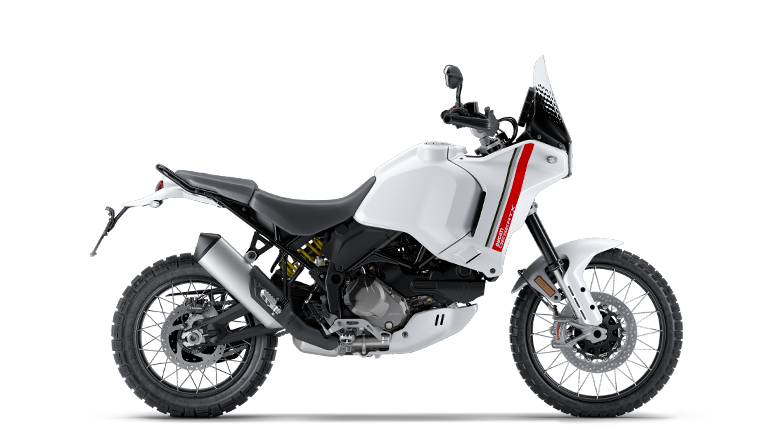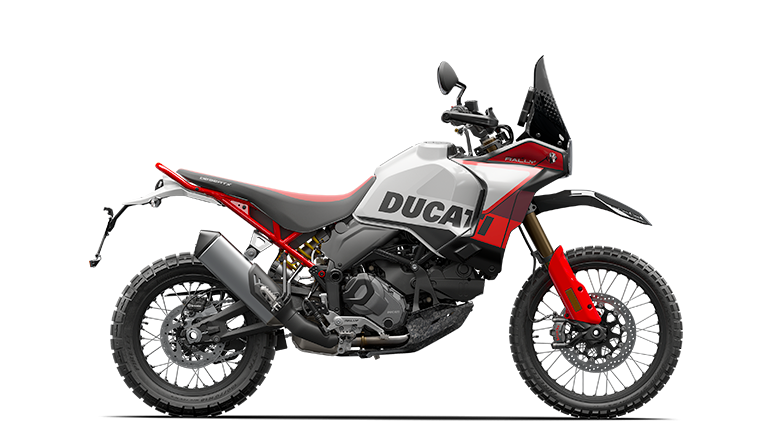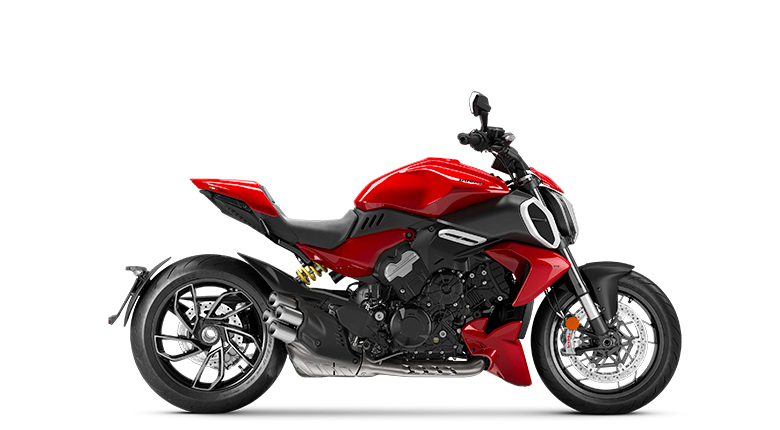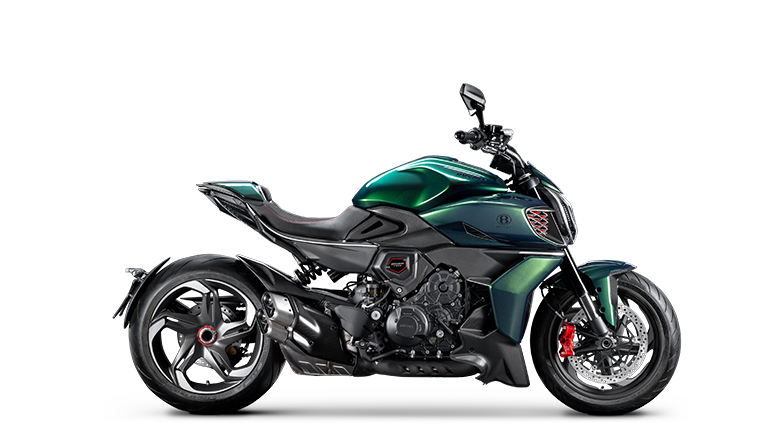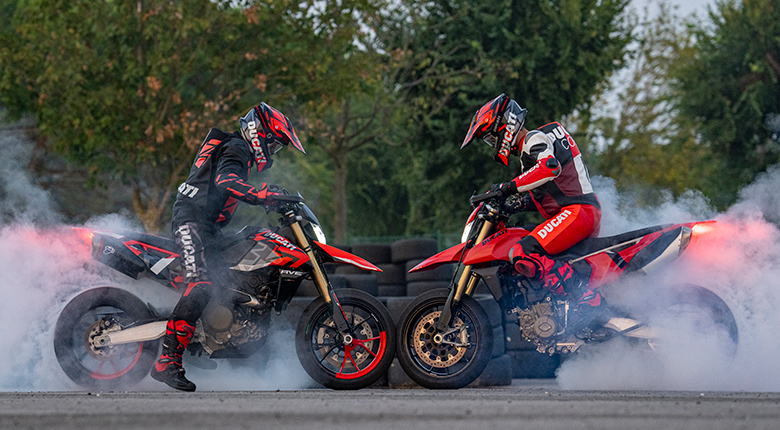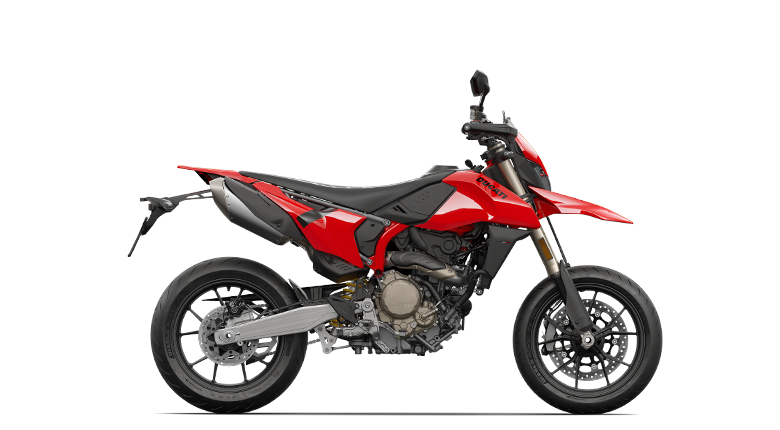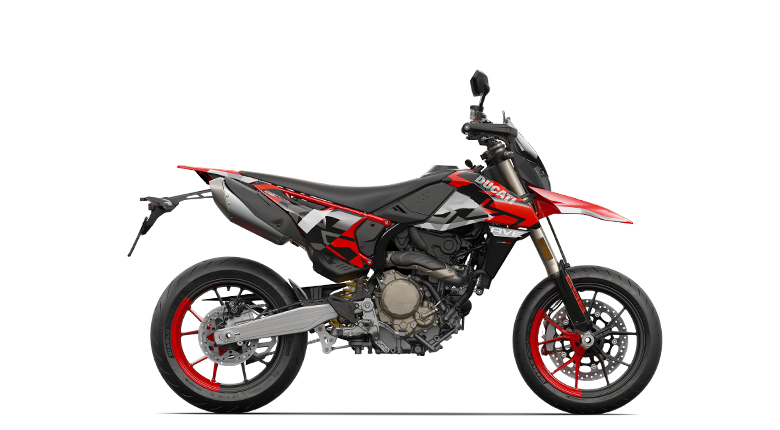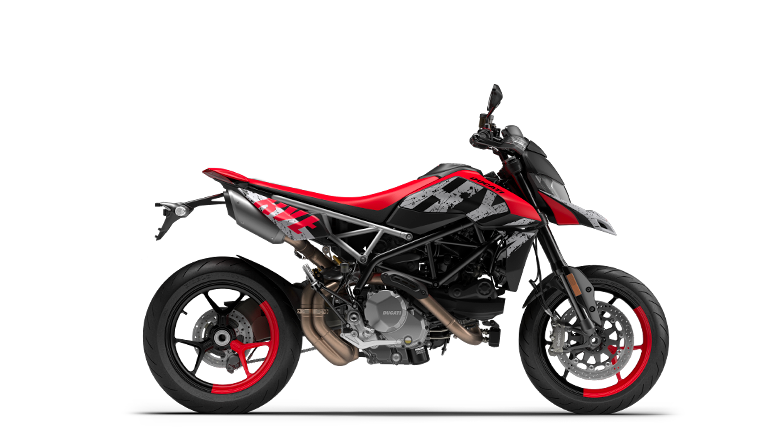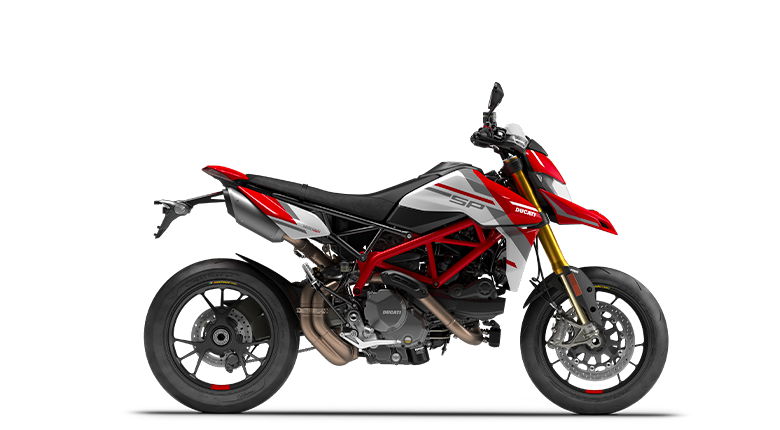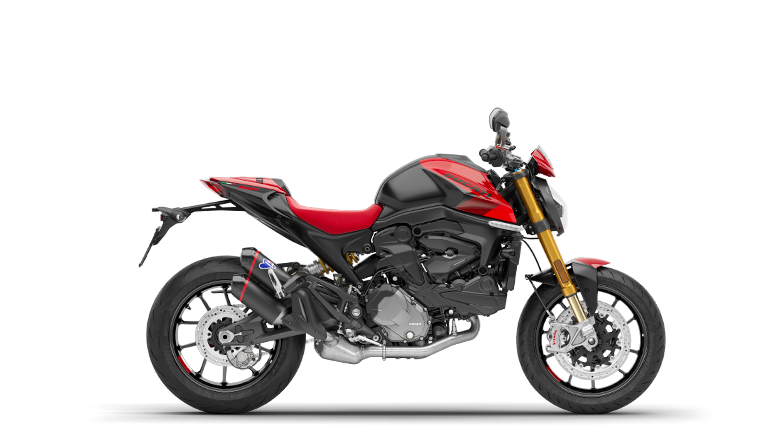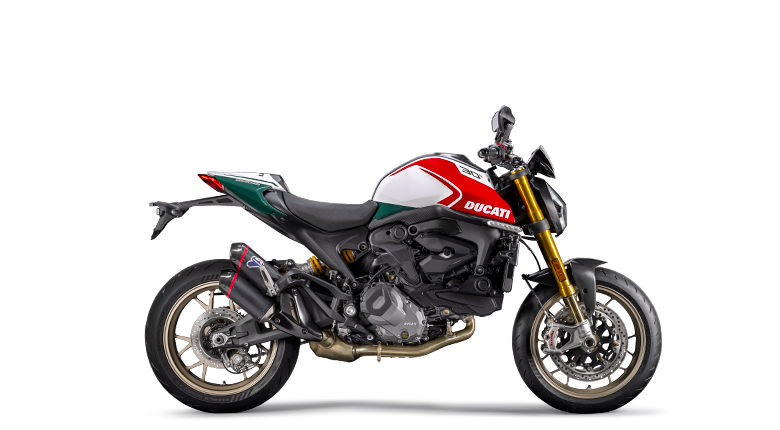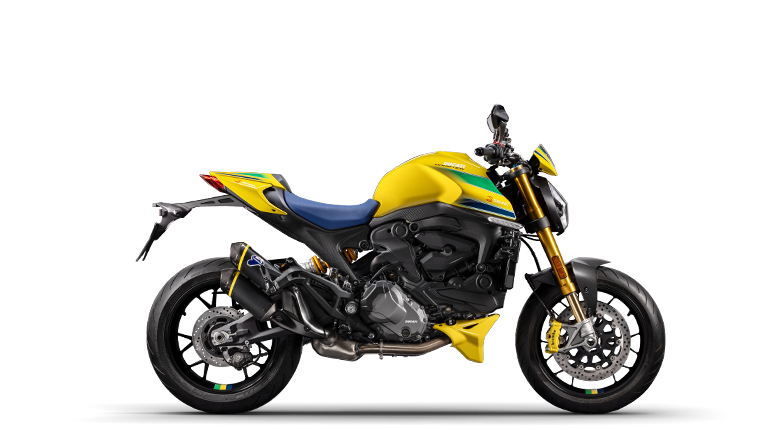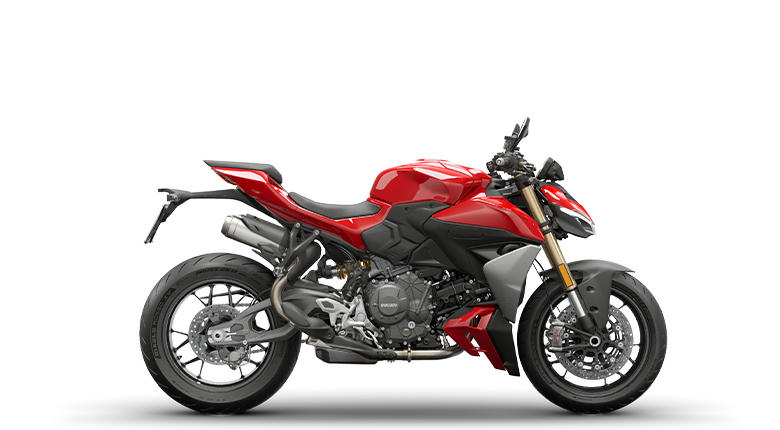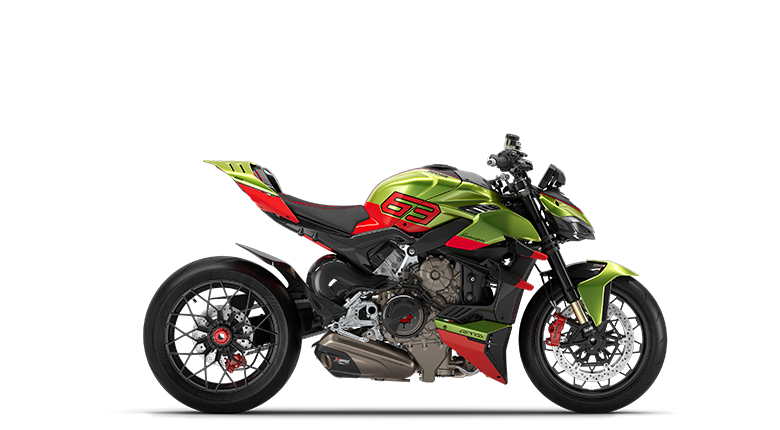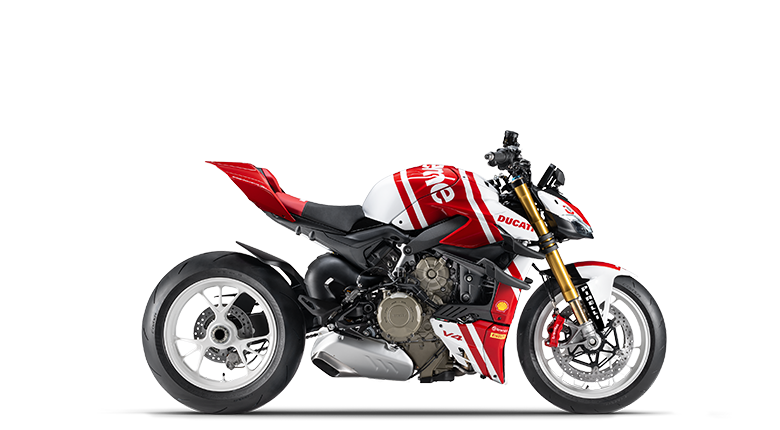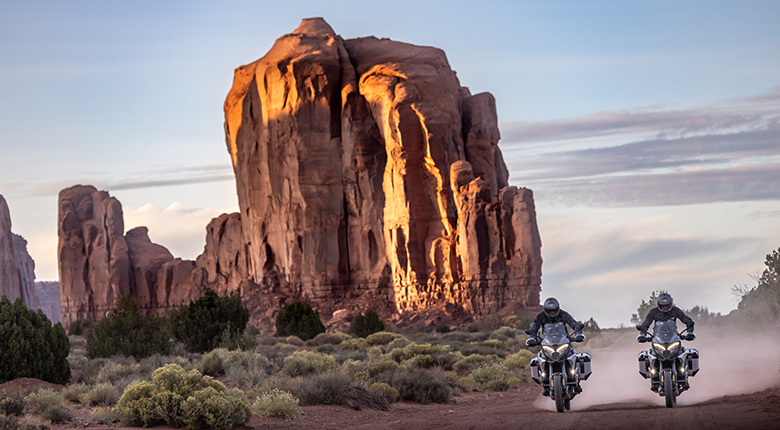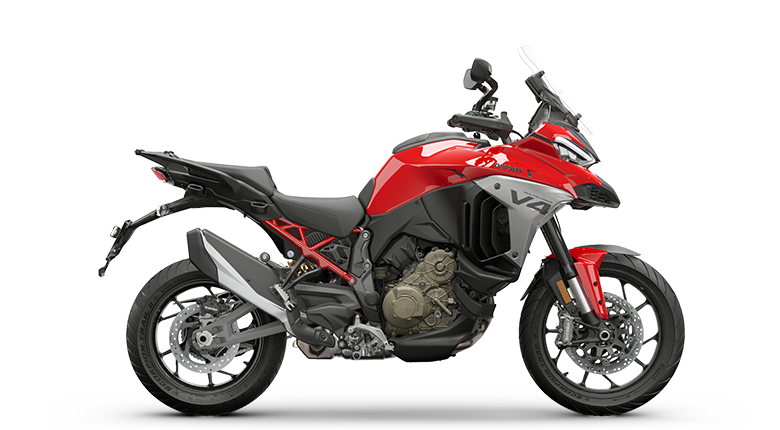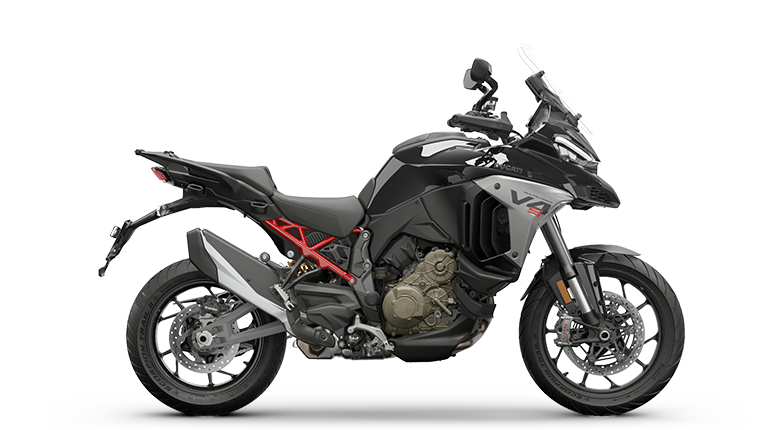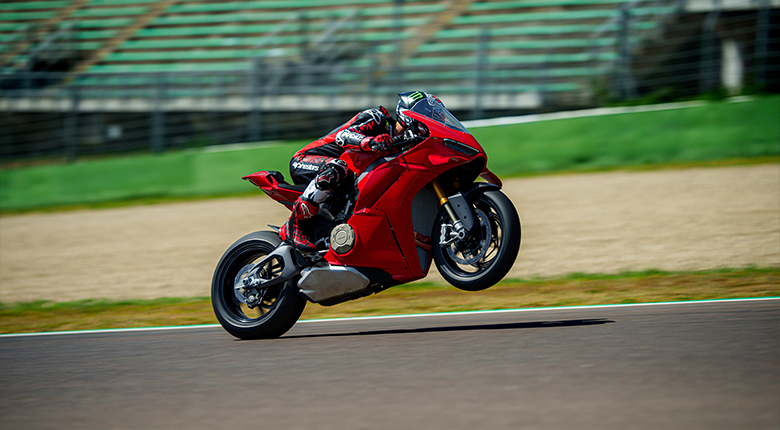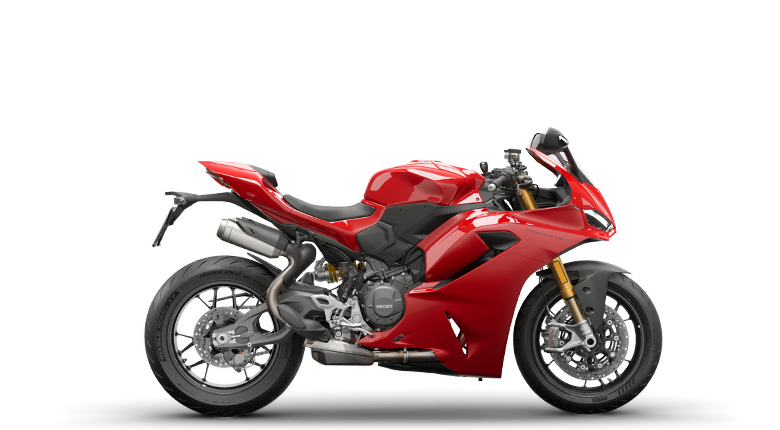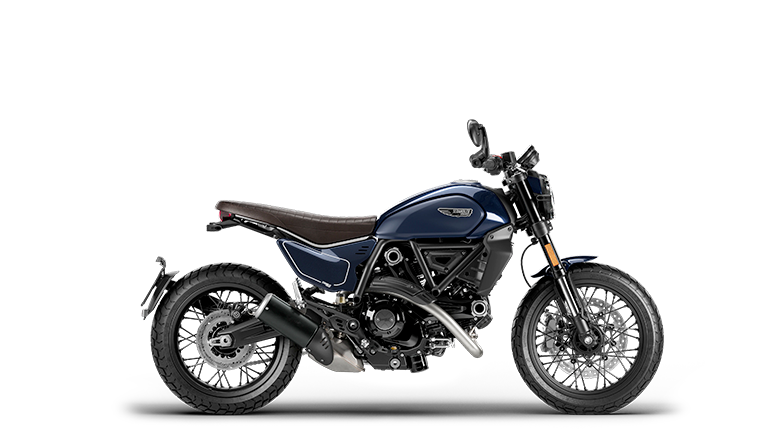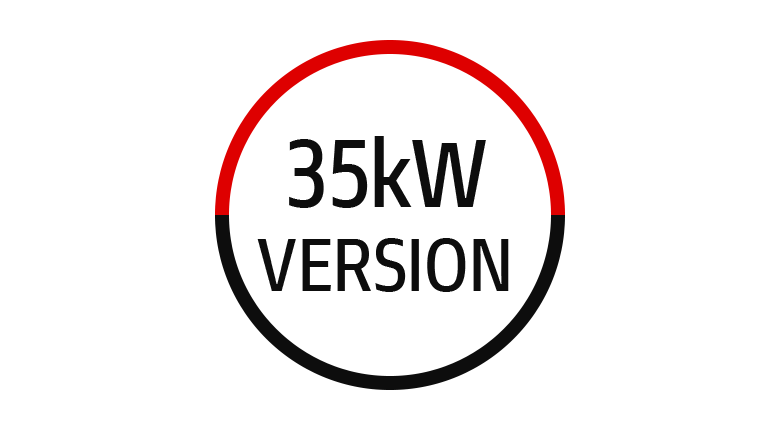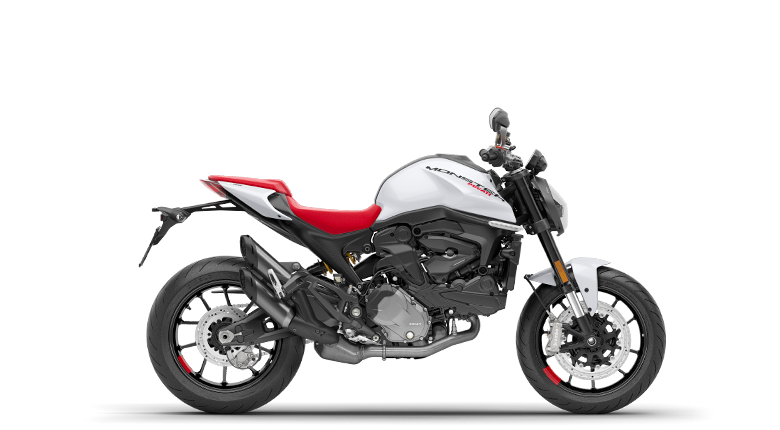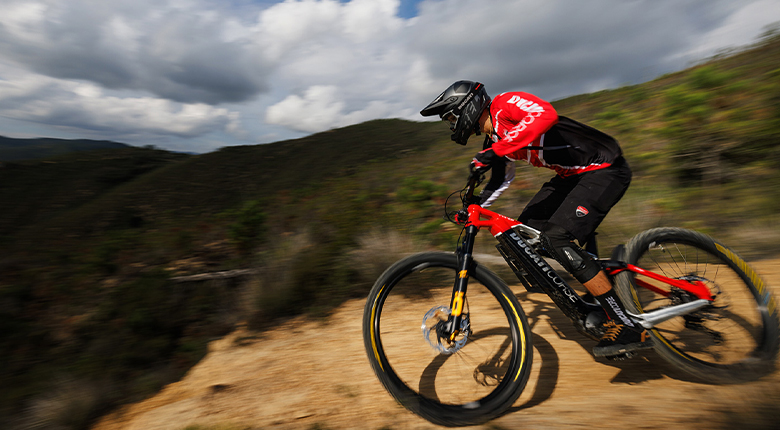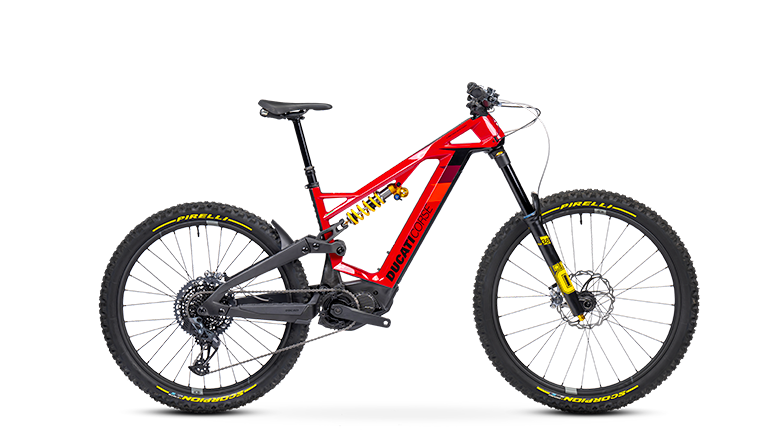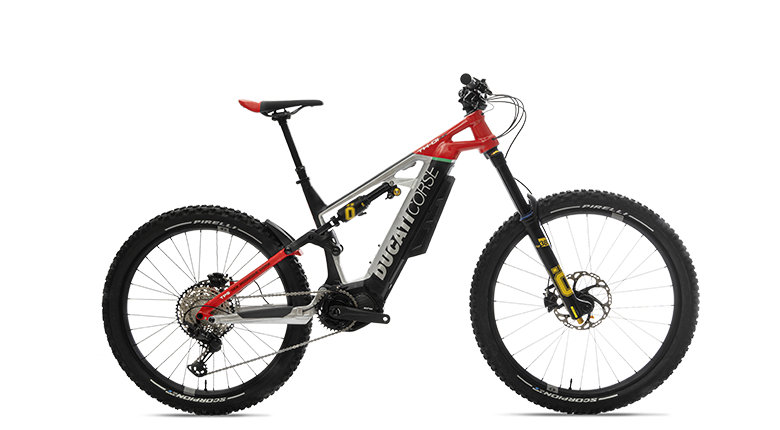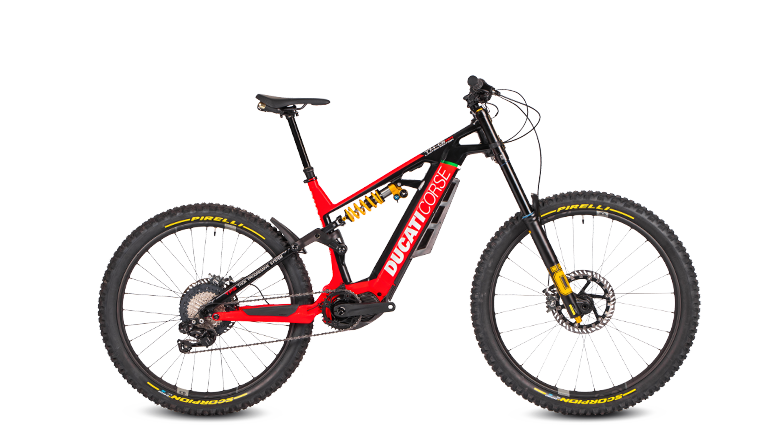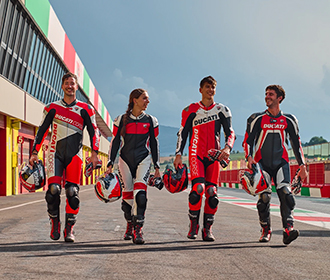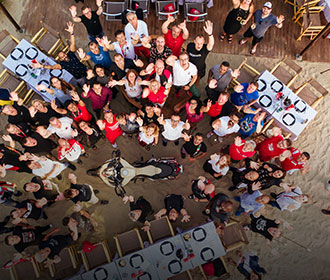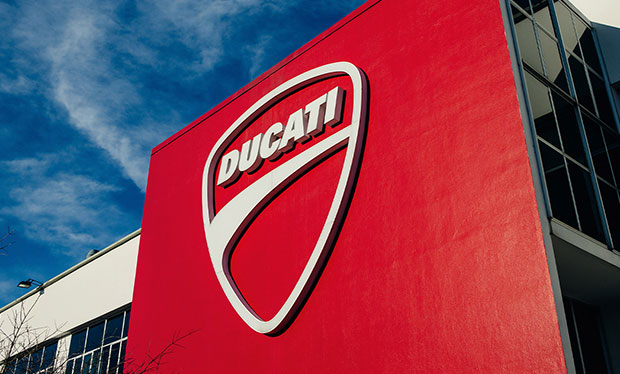- Modelli
- Configuratore
- Shop
- News
- Racing
- DWP 2026
-
Modelli
-
DesertXDa 17.690 €
![]()
- Overview
-
new
DesertX Discovery
![]() DesertX Discovery
DesertX Discovery- 110 CV Potenza
- 9,4 kgm Coppia
-
210 kg
Peso in ordine di marcia
senza carburante
A partire da 19.990 € i -
DesertX
![]() DesertX
DesertX- 110 CV Potenza
- 9.4 kgm Coppia
-
210 kg
Peso in ordine di marcia
senza carburante
A partire da 17.690 € i -
Rally
![]() DesertX Rally
DesertX Rally- 110 CV Potenza
- 9,4 kgm Coppia
-
211 kg
Peso in ordine di marcia
senza carburante
A partire da 22.790 €
Depotenziata: 21.790 € i
DesertX -
DiavelDa 27.290 €
![]()
-
V4
![]() Diavel V4
Diavel V4- 168 CV Potenza
- 12,8 kgm Coppia
-
223 kg
Peso in ordine di marcia
senza carburante
A partire da 27.290 € i - Diavel for Bentley
Diavel -
V4
-
XDiavelDa 28.990 €
![]()
-
HypermotardDa 13.290 €
![]()
- OVERVIEW
-
698 Mono
![]() Hypermotard 698 Mono
Hypermotard 698 Mono- 77,5 CV Potenza
- 6,4 kgm Coppia
-
151 kg
Peso in ordine di marcia
senza carburante
A partire da 13.290 €
Depotenziata: 12.290 € i -
698 Mono RVE
![]() Hypermotard 698 Mono RVE
Hypermotard 698 Mono RVE- 77,5 CV Potenza
- 6,4 kgm Coppia
-
151 kg
Peso in ordine di marcia
senza carburante
A partire da 14.190 €
Depotenziata: 13.190 € i -
950 RVE
![]() Hypermotard 950 RVE
Hypermotard 950 RVE- 114 CV Potenza
- 9,8 kgm Coppia
-
193 kg
Peso in ordine di marcia
senza carburante
A partire da 16.190 € i -
950 SP
![]() Hypermotard 950 SP
Hypermotard 950 SP- 114 CV Potenza
- 9,8 kgm Coppia
-
191 kg
Peso in ordine di marcia
senza carburante
A partire da 19.390 € i -
950
![]() Hypermotard 950
Hypermotard 950- 114 CV Potenza
- 9,8 kgm Coppia
-
193 kg
Peso in ordine di marcia
senza carburante
A partire da 15.190 € i
Hypermotard -
Monster Da 12.690 €
![]()
-
Monster
![]() Monster
Monster- 111 CV Potenza
- 9,5 kgm Coppia
-
179 kg
Peso in ordine di marcia
senza carburante
A partire da 12.690 €
Depotenziata 35 kw: 11.690 € i -
Monster +
![]() Monster +
Monster +- 111 CV Potenza
- 9,5 kgm Coppia
-
179 kg
Peso in ordine di marcia
senza carburante
A partire da 13.090 €
Depotenziata 35kw: 12.090 € i -
Monster SP
![]() Monster SP
Monster SP- 111 CV Potenza
- 9,5 kgm Coppia
-
177 kg
Peso in ordine di marcia
senza carburante
A partire da 15.890 €
Depotenziata 35kW: 14.890€ i - 30° Anniversario
- new Monster Senna
Monster -
Monster
-
StreetfighterDa 15.890 €
![]()
-
new
V2
![]() Streetfighter V2
Streetfighter V2- 120 CV Potenza
- 9,5 kgm Coppia
-
178 kg
Peso in ordine di marcia
senza carburante
A partire da 15.890 €
Depotenziata 35kw: 14.890 € i -
new
V2 S
![]() Streetfighter V2 S
Streetfighter V2 S- 120 CV Potenza
- 9,5 kgm Coppia
-
175 kg
Peso in ordine di marcia
senza carburante (versione S)
A partire da 18.290 €
Depotenziata 35kw: 17.290 € i -
new
V4
![]() Streetfighter V4
Streetfighter V4- 214 CV Potenza
- 12,2 kgm Coppia
-
191 kg
Peso in ordine di marcia
senza carburante
A partire da 24.790 € i -
new
V4 S
![]() Streetfighter V4 S
Streetfighter V4 S- 214 CV Potenza
- 12,2 kgm Coppia
-
189 kg
Peso in ordine di marcia
senza carburante
A partire da 27.990 € i -
V4 SP2
![]() Streetfighter V4 SP2
Streetfighter V4 SP2- 208 CV Potenza
- 12,5 Kgm Coppia
-
190 kg
Peso in ordine di marcia
senza carburante
36.090 € i - V4 Lamborghini
- new V4 Supreme®
Streetfighter -
new
V2
-
MultistradaDa 16.690 €
![]()
- OVERVIEW
-
new
V2
![]() Multistrada V2
Multistrada V2- 115,6 CV Potenza
- 9,4 kgm Coppia
-
199 kg
Peso in ordine di marcia
senza carburante
A partire da 16.690 € i -
new
V2 S
![]() Multistrada V2 S
Multistrada V2 S- 115,6 CV Potenza
- 9,4 kgm Coppia
-
202 kg
Peso in ordine di marcia
senza carburante
A partire da 19.390 € i -
new
V4
![]() Multistrada V4
Multistrada V4- 170 CV POTENZA
- 12,6 kgm COPPIA
-
229 kg
Peso in ordine di marcia
senza carburante
A partire da 20.690 € i -
new
V4 S
![]() Multistrada V4 S
Multistrada V4 S- 170 CV POTENZA
- 12,6 kgm COPPIA
-
231 kg
Peso in ordine di marcia
senza carburante
A partire da 24.990 € i -
V4 Rally
![]() Multistrada V4 Rally
Multistrada V4 Rally- 170 CV Potenza
- 12,3 kgm Coppia
-
238 kg
Peso in ordine di marcia
senza carburante
A partire da 28.190€ i -
new
V4 Pikes Peak
![]() Multistrada V4 Pikes Peak
Multistrada V4 Pikes Peak- 170 CV Potenza
- 12,6 kgm Coppia
-
227 kg
Peso in ordine di marcia
senza carburante
A partire da 32.490 € i -
V4 RS
![]() Multistrada V4 RS
Multistrada V4 RS- 180 CV Potenza
- 12,0 kgm Coppia
-
225 kg
Peso in ordine di marcia
senza carburante
A partire da 38.390 € i
Multistrada -
PanigaleDa 16.790 €
![]()
- Overview
-
new
V2
![]() Panigale V2
Panigale V2- 120 CV Potenza
- 9,5 kgm Coppia
-
179 kg
Peso in ordine di marcia
senza carburante
A partire da 16.790 €
Depotenziata 35kw: 15.790 € i -
new
V2 S
![]() Panigale V2 S
Panigale V2 S- 120 CV Potenza
- 9,5 kgm Coppia
-
176 kg
Peso in ordine di marcia
senza carburante (versione S)
A partire da 19.190 €
Depotenziata 35kw: 18.190 € i -
new
V2 Superquadro Final Edition
![]() V2 Superquadro Final Edition
V2 Superquadro Final Edition- 155 CV Potenza
- 104 Nm Coppia
-
190 kg
Peso in ordine di marcia
senza carburante
A partire da 28.000 € i -
new
V4
![]() Panigale V4
Panigale V4- 216 CV Potenza
- 12.3 kgm Coppia
-
191 kg
Peso in ordine di marcia
senza carburante
A partire da 27.790 € i -
new
V4 S
![]() Panigale V4 S
Panigale V4 S- 216 CV Potenza
- 12.3 kgm Coppia
-
187 kg
Peso in ordine di marcia
senza carburante (Versione S)
A partire da 33.990 € i - new V4 Tricolore
- new V4 Tricolore Italia
- new V4 Lamborghini
Panigale -
![]()
-
Patente A2
![]()
- OVERVIEW
-
new
Multistrada V2 / V2 S
![]() Multistrada V2 /V2 S
Multistrada V2 /V2 S- 115,6 CV Potenza
- 9,4 kgm Coppia
-
199 kg
Peso in ordine di marcia
senza carburante
A partire da 16.690 €
Depotenziata 35 kW: 15.690 € i -
new
Panigale V2 / V2 S
![]() Panigale V2 / V2 S
Panigale V2 / V2 S- 120 CV Potenza
- 9,5 kgm Coppia
-
176 kg
Peso in ordine di marcia
senza carburante (versione S)
A partire da 16.790 €
Depotenziata 35kw: 15.790 € i -
new
Streetfighter V2 / V2 S
![]() Streetfighter V2 / V2 S
Streetfighter V2 / V2 S- 120 CV Potenza
- 9,5 kgm Coppia
-
175 kg
Peso in ordine di marcia
senza carburante (versione S)
A partire da 15.890 €
Depotenziata 35kw: 14.890 € i -
DesertX
![]() DesertX
DesertX- 110 CV Potenza
- 9.4 kgm Coppia
-
210 kg
Peso in ordine di marcia
senza carburante
A partire da 17.690 €
Depotenziata 35kW: 16.690 € i -
DesertX Rally
![]() DesertX Rally
DesertX Rally- 110 CV Potenza
- 9,4 kgm Coppia
- 937 cc Cilindrata
A partire da 22.790 €
Depotenziata: 21.790 € i -
Monster / +
![]() Monster / +
Monster / +- 111 CV Potenza
- 9,5 kgm Coppia
-
179 kg
Peso in ordine di marcia
senza carburante
A partire da 12.690 €
Depotenziata 35 kw: a partire da 11.690 € i -
Monster SP
![]() Monster SP
Monster SP- 111 CV Potenza
- 9,5 kgm Coppia
-
177 kg
Peso in ordine di marcia
senza carburante
A partire da 15.890 €
Depotenziata 35kW: 14.890€ i -
Hypermotard 950 / SP / RVE
![]() Hypermotard 950
Hypermotard 950- 114 CV Potenza
- 9,8 kgm Coppia
-
193 kg
Peso in ordine di marcia
senza carburante
A partire da 15.190 €
Depotenziata 35 kW: 14.190 € i -
Hypermotard 698 Mono
![]() Hypermotard 698 Mono
Hypermotard 698 Mono- 77,5 CV Potenza
- 6,4 kgm Coppia
- 659 cc Cilindrata
A partire da 13.290 €
Depotenziata: 12.290 € i - Gamma Scrambler
Patente A2 -
Off-RoadDa 12.990 €
![]()
-
new
Desmo450 MX
![]() Desmo450 MX
Desmo450 MX- 63,5 CV Potenza
- 53,5 Nm Coppia
-
104,8 kg
Peso in ordine di marcia
senza carburante
A partire da 12.990 € i
Off-Road -
new
Desmo450 MX
-
E-BIKEDa 5.590 €
![]()
- Overview
-
Powerstage RR Limited Edition
![]() Powerstage RR Limited Edition11.990€ i
Powerstage RR Limited Edition11.990€ i -
TK-01RR
![]() TK-01RROra a partire da 6.690€ i
TK-01RROra a partire da 6.690€ i -
TK-01RR Limited Edition
![]() TK-01RR Limited Edition10.890€ i
TK-01RR Limited Edition10.890€ i -
MIG-S
![]() MIG-SOra a partire da 4.490€ i
MIG-SOra a partire da 4.490€ i -
FUTA
![]() FUTAOra a partire da 6.490€ i
FUTAOra a partire da 6.490€ i -
FUTA AXS
![]() FUTA AXSOra a partire da 6.490€ i
FUTA AXSOra a partire da 6.490€ i -
new
FUTA All-Road
![]() FUTA All-RoadOra a partire da 6.490€ i
FUTA All-RoadOra a partire da 6.490€ i
E-BIKE -
Serie Limitate
![]()
- Ducati Speciale
- Ducati Unica
Serie Limitate
-
- Configuratore
- Usato
- DWP 2026
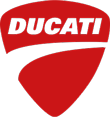
Moto
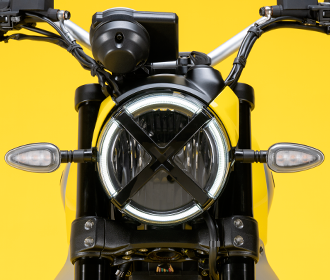

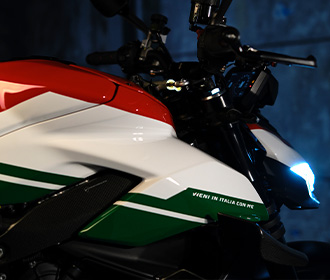
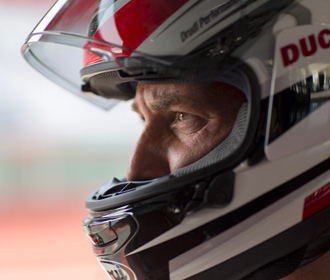

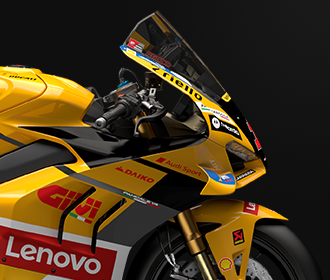
Diavel
XDiavel
Panigale
Streetfighter
Off-Road
E-BIKE
Serie Limitate

Configuratore Scrambler
Configura ora la tua Scrambler

Brochure
Scopri tutti i dettagli della tua Ducati preferita e scarica la brochure!
Clicca e scopri!
Clicca e scopri!

Ducati Unica
Ducati Unica è il programma di personalizzazione dedicato a chi vuole ideare e realizzare la propria moto.
Clicca e scopri!
Clicca e scopri!

Moto Usate
Trova l'occasione perfetta per salire in sella alla tua prossima Ducati.
Clicca e scopri!
Clicca e scopri!

MotoE
La prima Ducati da corsa dotata di un powertrain completamente elettrico.
Clicca e scopri!
Clicca e scopri!

Ducati Speciale
Un concentrato di design, eccellenza ingegneristica e tecnologia: le serie speciali Ducati, prodotte in edizioni limitate e numerate.
Accessori e Abbigliamento
Accessori
Abbigliamento
Ducati World
Eventi
DRE Riding Academy
Viaggia con Ducati
Ducati Stories
News
Racing
MotoGP
MotoE
Servizi e Manutenzione
Manutenzione
La Rete Ducati
Financial Service
Azienda
Chi siamo
Innovation
Design
Responsabilità sociale d'Impresa
Borgo Panigale Experience
Fondazione Ducati
Partner
- Ducati World
- Accessori e Abbigliamento
- App
- Azienda
- Servizi e manutenzione
- Club Ducati
- Trova Concessionari
- Usato
 Italy
Change
Italy
Change
Modelli

DesertX
New
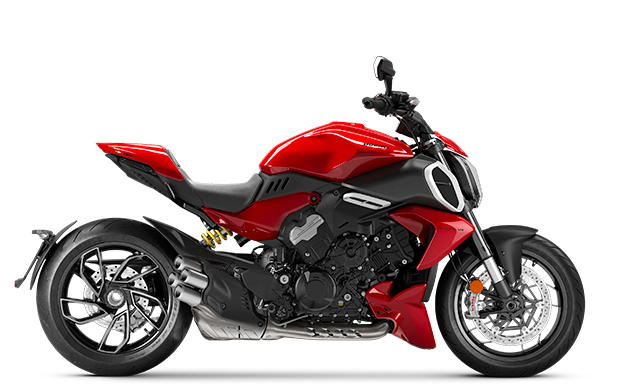
Diavel
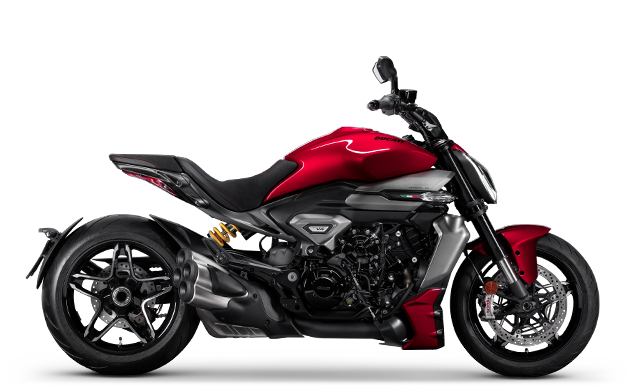
XDiavel
New
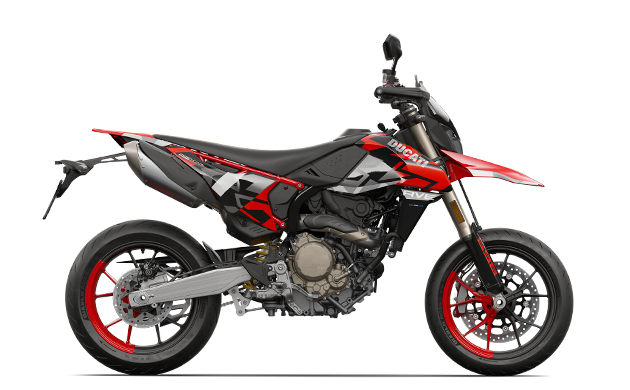
Hypermotard

Monster
New
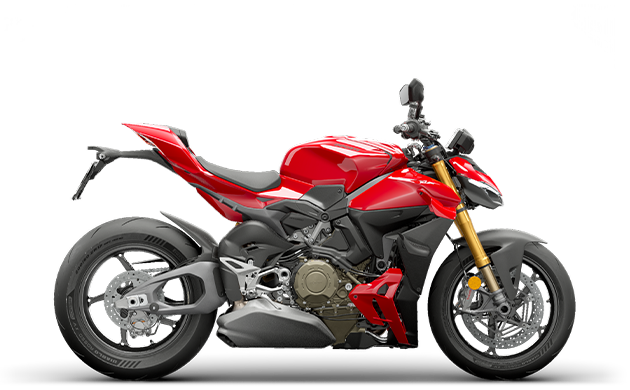
Streetfighter
New
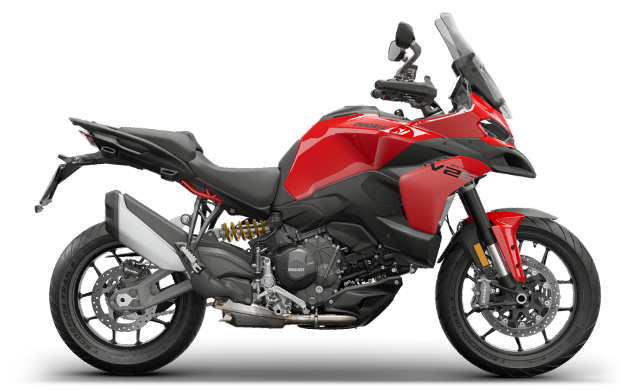
Multistrada
New

Panigale
New

SCRAMBLER
New
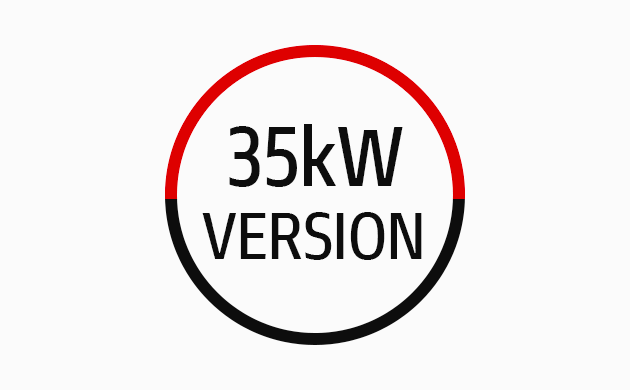
Patente A2
New

Off-Road
New

E-BIKE
New

Serie Limitate
Racing
Ducati World
- Eventi
- DRE Riding Academy
- Viaggia con Ducati
- Ducati Stories
- News

Calendario Eventi
Scopri gli eventi e i raduni organizzati da Ducati e dai Ducati Official Club.
Scopri di più
Accessori e Abbigliamento
- Accessori
- Abbigliamento
- Collab
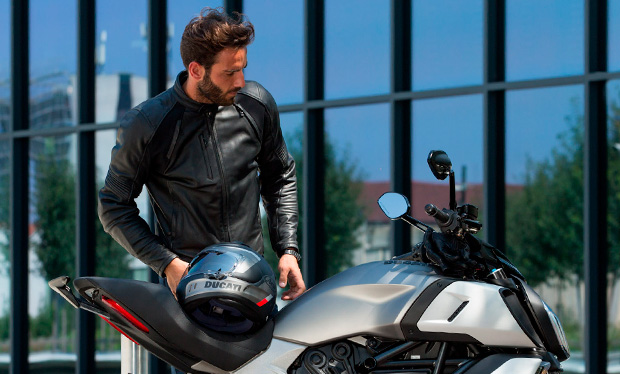
Ducati Shop Online
Lo Shop Online ha una veste tutta nuova. Il nostro stile è lo stesso di sempre.
Entra e acquista subito!
Azienda
- Chi siamo
- Contattaci
- Innovation
- Design
- Fondazione Ducati
- Borgo Panigale Experience
- Partner
Servizi e manutenzione
- Servizi
- Manutenzione
- La Rete Ducati
- Financial Service
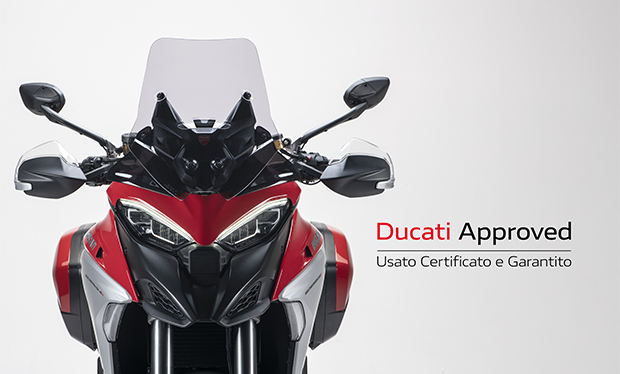
Ducati Approved - Usato Certificato
Quando scegli una moto Ducati Approved, hai la certezza di avere Ducati sempre al tuo fianco.
Scopri di più
Club Ducati

Ducati People
Esplora le storie di persone che con Ducati condividono valori, passione ed emozioni.
Scopri di più
Borgo Panigale Experience
Audioguida Museo

1. Le origini (1926-1945)
Se si ripercorre a ritroso la storia di Ducati fino all’anno della fondazione, si scopre che essa non inizia con le motociclette, ma con la produzione elettrotecnica; e non a Borgo Panigale, ma nel centro di Bologna.1. Le origini (1926-1945)
2a. Ducati rimette in moto l'Italia (1946-1960) - Parte Prima
Sul finire degli anni Quaranta, il paese attraversa un momento di generale rinascita. I Fratelli Ducati, al termine del conflitto mondiale, decidono di dedicarsi ad un nuovo settore: la produzione di componenti motoristiche e motocicli.2a. Ducati rimette in moto l'Italia (1946-1960) - Parte Prima
2b. Il Cucciolo
La storia motociclistica di Ducati non comincia con una moto, bensì con un motore ausiliario, il Cucciolo, prodotto a partire dal 1946.2b. Il Cucciolo
2b. Ducati rimette in moto l'Italia (1946-1960) - Parte Seconda
Nel 1948 la produzione viene scorporata e affidata a due aziende distinte, Ducati Elettrotecnica (oggi Ducati Energia) e Ducati Meccanica (l’attuale Ducati Motor Holding S.p.A), che da questo momento avranno destini separati.2b. Ducati rimette in moto l'Italia (1946-1960) - Parte Seconda
2cd. Nel segno di Taglioni
Sull’onda dei primi successi nelle gare di Gran Fondo, Ducati decide di puntare sulle competizioni su pista e incarica l’ingegner Taglioni di progettare una moto da Gran Premio da 125 cc.2cd. Nel segno di Taglioni
3a. Gran Sport 125 Marianna e 175 F3
La Gran Sport 125, soprannominata “Marianna”, è la prima moto da corsa di casa Ducati e domina le gare di Gran Fondo. Le tecniche adottate sulla Marianna ispirano nel 1957 la 175 F3, considerata l’antesignana delle moderne Superbike.3a. Gran Sport 125 Marianna e 175 F3
3b. 125 GP Desmo e 250 GP Desmo
La 125 Desmo di Taglioni è la prima Ducati ad adottare la distribuzione di tipo "desmodromico"; segna l’esordio di Ducati sulle piste con Mike Hailwood nel 1959; l’anno successivo si aggiudica il campionato inglese con la 250 GP Desmo.3b. 125 GP Desmo e 250 GP Desmo
4a. Dal sogno americano alle maximoto (1961-1989) - Parte Prima
Alla fine degli anni ’50 l’Italia vive un crescente benessere: si diffondono le prime utilitarie e le motociclette cedono il loro ruolo di mezzo di trasporto per acquisire quello di simbolo, libertà e trasgressione.4a. Dal sogno americano alle maximoto (1961-1989) - Parte Prima
4b. Scrambler 450
Lo Scrambler gioca un ruolo determinante nel ritorno della motocicletta sulle strade italiane. Creato nel 1962 come moto da “dirt track” per il mercato statunitense, nel 1968 viene riproposto sul mercato italiano in versione aggiornata.4b. Scrambler 450
4cd. 750 GT e 500 Pantah
La 750 GT è la prima maximoto di Ducati, pensata per impiego sia su strada che su pista. Otto anni dopo il suo lancio, nel ’79, Ducati presenta la 500 Pantah, il cui nome, contrazione di pantera, rivela un’anima agile e scattante.4cd. 750 GT e 500 Pantah
4d. Dal sogno americano alle maximoto (1961-1989) - Parte Seconda
Gli anni ‘70 si aprono con una grande novità per il mercato motociclistico europeo: dal Giappone arrivano le maxi moto pluricilindriche dotate di tecnologie e cilindrate raffinate e performanti.4d. Dal sogno americano alle maximoto (1961-1989) - Parte Seconda
4e. 750 F1 e 750 Paso
Nel 1985 con il lancio della 750 F1, Fabio Taglioni termina la sua trentennale collaborazione con l'azienda bolognese. Nel 1986 Ducati lancia la prima moto creata dal designer Massimo Tamburini, la 750 Paso.4e. 750 F1 e 750 Paso
4f. Elefant 900 Parigi Dakar
Negli anni '80 Ducati si cimenta anche con raid motociclistici africani. Per far fronte alla nuova sfida, il reparto corse di Borgo Panigale, prepara un motore desmodronico da 904cc potente e versatile.4f. Elefant 900 Parigi Dakar
4g. Dal sogno americano alle maximoto (1961-1989) - Parte Terza
Dopo un lungo periodo, negli anni '80 Ducati consolida la propria anima sportiva. Taglioni ha da poco concluso la sua collaborazione con l'azienda, gli subentrano Massimo Bordi e Gianluigi Mengoli e viene così ideato il Ducati Desmoquattro.4g. Dal sogno americano alle maximoto (1961-1989) - Parte Terza
5a. 500 GP Bicilindrica e 750 Imola Desmo
Il lancio del motore bicilindrico a L di 90° coincide con il ritorno di Ducati alle competizioni su pista. Nel 1971 infatti, in contemporanea con la 750 GT Stradale, nasce la 500 GP.5a. 500 GP Bicilindrica e 750 Imola Desmo
5b. 750 SS Desmo - 900 SS IOM TT
Nel 1973 Ducati avvia la produzione in serie della prima bicilindrica stradale dotata di sistema desmodromico, la 750 SuperSport Desmo. Nel 1975 nasce la 900 SS con la quale Hailwood si aggiudica la vittoria al Tourist Trophy del 1978.5b. 750 SS Desmo - 900 SS IOM TT
5c. 600 TT2 - 750 F1
L'ultimo progetto realizzato da Taglioni è la 600 TT2, la prima moto da corsa con motore bicilindrico. Nel 1983, viene presentata la 750 F1, che vince la 24 Horas del Montjuic, il campionato italiano F1 e la Battle of the Twins.5c. 600 TT2 - 750 F1
5d. 851 Superbike - 888 Superbike 1991 - 888 Superbike 1992
L'era di Bordi e Mengoli comincia con la realizzazione del primo bicilindrico desmo a quattro valvole raffreddato ad acqua, il Desmoquattro.5d. 851 Superbike - 888 Superbike 1991 - 888 Superbike 1992
5e. Supermono
All’inizio degli anni ’90 Ducati si dedica anche ad un’altra categoria di competizioni riservata ai motori monocilindrici. Nel 1992 nasce la Supermono, progettata dall’allora ingegnere e attuale amministratore delegato di Ducati, Claudio Domenicali.5e. Supermono
5f. 916 Superbike 1994 - 916 Superbike 1996 - 996 R Factory 2001 - 999 Factory 2003
Nel 1994 debutta nel campionato Superbike il capolavoro del designer riminese Massimo Tamburini, la 916 Superbike, e con questo iconico modello prende avvio il binomio Ducati-Carl Fogarty, una combinazione vincente.5f. 916 Superbike 1994 - 916 Superbike 1996 - 996 R Factory 2001 - 999 Factory 2003
6a. Le moto iconiche dello stile italiano - 1988-1999
Negli anni ’90 Ducati affianca all’innovazione tecnologica una sempre maggiore attenzione per il design e la personalizzazione. Vengono presentate il Monster 900 e la 916, passate alla storia come autentiche icone di stile.6a. Le moto iconiche dello stile italiano - 1988-1999
6b. 851 Tricolore - 900 Superlight
Alla fine degli anni 80, i successi in pista spingono Ducati ad applicare alle moto stradali l’innovazione tecnologica ed i materiali delle moto da competizione ai modelli stradali: nascono così la 851 Tricolore e la 900 Superlight.6b. 851 Tricolore - 900 Superlight
6c. 916
La collaborazione tra Ducati e il designer Massimo Tamburini inizia nel 1986, con il lancio della 750 Paso. Un esordio promettente, a cui segue un progetto ancora più ambizioso, quello di una moto stradale di nuova concezione: la 916.6c. 916
6d. Monster 900
Il Monster 900 è il modello più longevo mai prodotto dalla casa di Borgo Panigale, con oltre 25 anni di produzione pressoché ininterrotta.6d. Monster 900
7a. Desmosedici GP03 e Desmosedici GP07
Dopo oltre trent’anni di assenza, nel 2002 Ducati torna a gareggiare nel motomondiale con la Desmosedici. Nel 2007 Ducati conquista il Titolo Piloti in MotoGP con un giovane Casey Stoner mentre la casa bolognese si aggiudica il Titolo Costruttori.7a. Desmosedici GP03 e Desmosedici GP07
7b. 1098 Factory 2008 Superbike - Desmosedici GP10 - 1198 Factory 2011 Superbike
Nel 2008 Troy Bayliss annuncia il suo ritiro dalle corse a fine stagione. Al campionato SBK di quell'anno, alla guida della 1098 Factory 2008, Bayliss colleziona 11 prime posizioni e si aggiudica il terzo titolo mondiale della sua carriera.7b. 1098 Factory 2008 Superbike - Desmosedici GP10 - 1198 Factory 2011 Superbike
8a. Un mondo con la moto al centro - 2000-oggi
Dalla sua prima edizione (1998), il World Ducati Week, il raduno ufficiale dei Ducatisti, è ormai un appuntamento imperdibile. Attira migliaia di tifosi e appassionati da ogni parte del mondo, in nome della passione per le “rosse” di Borgo Panigale.8a. Un mondo con la moto al centro - 2000-oggi
8b. 1199 Superleggera
Prodotta nel 2013 in soli 500 esemplari, la 1199 Superleggera è una sofisticata elaborazione della Panigale 1199, il prototipo della supersportiva Ducati di nuova generazione.8b. 1199 Superleggera
8c. Desmosedici RR e Superbike 1098 - 2006-2007
Nel 2006, Ducati presenta la Desmosedici RR che porta il concetto di "derivata da corsa" ancora più all'estremo. È poi con la 1098 che dal 2007 anche l’elettronica dei modelli da pista viene inserita nella produzione in serie.8c. Desmosedici RR e Superbike 1098 - 2006-2007
8d. Multistrada 1200
Con la Multistrada 1200 Ducati introduce il concetto rivoluzionario di "quattro moto in una", grazie ai suoi Riding Mode.8d. Multistrada 1200
8e. Scrambler Icon
Nel 2014, in occasione del World Ducati Week, viene presentato per la prima volta al pubblico il nuovo Scrambler Icon. Il nome richiama uno dei modelli Ducati più popolari, lo Scrambler degli anni 60.8e. Scrambler Icon
1. The origins (1926-1945)
If one scrolls back through Ducati’s history to the year it was founded, one will discover that the company began life in the centre of Bologna as an electrotechnical firm.1. The origins (1926-1945)
2a. Ducati gets Italy back on the road (1946-1960) - Part One
As the 1940s drew to a close, Italy was experiencing a period of revival. At the end of World War II, the Ducati brothers decided to turn their attention to a new sector: the manufacture of engine components and motorcycles.2a. Ducati gets Italy back on the road (1946-1960) - Part One
2b. The Cucciolo
Ducati’s motorcycling history did not start with a motorbike but rather an auxiliary engine, the "Cucciolo", production of which began in 1946.2b. The Cucciolo
2b. Ducati gets Italy back on the road (1946-1960) - Part Two
In 1948 production was broken up and two separate companies were established: Ducati Elettrotecnica (now Ducati Energia) and Ducati Meccanica (the current Ducati Motor Holding S.p.A).2b. Ducati gets Italy back on the road (1946-1960) - Part Two
2cd. Taglioni leaves its mark
In the wake of their first successes in the Gran Fondo races, Ducati decided to focus on track competitions and handed engineer Taglioni the task of designing a 125 cc Gran Prix bike.2cd. Taglioni leaves its mark
3a. Gran Sport 125 & 175 F3
The Gran Sport 125, nicknamed “Marianna”, is the Ducati's first ever racing bike and she dominated Gran Fondo races. The 175 F3, presented in 1957, is inspired by the technical solutions adopted by the Marianna.3a. Gran Sport 125 & 175 F3
3b. 125 GP Desmo & 250 GP Desmo
Taglioni’s 125 Desmo is the first Ducati to use “desmodromic” type timing; it marked Ducati’s debut on the racing circuits with Mike Hailwood in 1959. The next year he won the the British Championship on the 125 GP Desmo.3b. 125 GP Desmo & 250 GP Desmo
4a. From the american dream to superbikes (1961-1989) - Part One
In the late 1950s, general wealth increased; the use of the first utility cars becomes widespread and so motorcycles gave up their role as a means of transportation to acquire that of symbol, freedom and transgression.4a. From the american dream to superbikes (1961-1989) - Part One
4b. The Scrambler 450
The Scrambler was to play a key role in the return of the motorcycle to Italy’s roads. Created in 1962 as a dirt track bike for the US Market, in 1968 it was re-launched on the Italian market in an upgraded version.4b. The Scrambler 450
4cd. 750 GT & 500 Pantah
The 750 GT was the first Ducati Maximoto model, designed for dual-purpose on road and racing. Eight years later, in 1979, Ducati introduced the 500 Pantah.4cd. 750 GT & 500 Pantah
4d. From the american dream to superbikes (1961-1989) - Part Two
The 1970s opened with a total innovation for the European motorcycling market - the arrival of the multi-cylinder Maximotos, equipped with high technology and higher displacements.4d. From the american dream to superbikes (1961-1989) - Part Two
4e. The 750 F1 & 750 Paso
In 1985, with the launch of the 750 F1, Fabio Taglioni drew his thirty-year relationship with Ducati to a close. By 1986, the 750 F1 had already been joined by the first Ducati bike created by Massimo Tamburini - the 750 Paso.4e. The 750 F1 & 750 Paso
4f. The Elefant 900 Paris Dakar
In the 80s Ducati also tried their hand at African motorcycling ventures. In order to take on the new challenge, the Racing Division prepared a powerful and versatile 904 cm3 desmodromic engine.4f. The Elefant 900 Paris Dakar
4g. From the american dream to superbikes (1961-1989) - Part Three
In the 80s, after a long period of time, Ducati built on its own sporting spirit. Taglioni had only recently left the company. His place was taken by Massimo Bordi and Gianluigi Mengoli, two of his apprentices.4g. From the american dream to superbikes (1961-1989) - Part Three
5a. The 500 GP Bicilindrica & 750 Imola Desmo
The launch of the 90° L twin-cylinder coincided with Ducati's return to track racing. Indeed, in 1971, the launch of the 750 GT road version coincided with that of the 500 GP, the first L twin-cylinder racer developed by Ducati for the premiere class.5a. The 500 GP Bicilindrica & 750 Imola Desmo
5b. The 750 SS Desmo & 900 SS IOM TT
In 1973 Ducati began the mass production of the first twin-cylinder road bike equipped with a desmodromic system - the 750 SuperSport Desmo. In 1975, Ducati launched the 900 SS. Riding this bike, Hailwood won the Tourist Trophy in 1978.5b. The 750 SS Desmo & 900 SS IOM TT
5c. The 600 TT2 & 750 F1
The last design from Taglioni was the 600 TT2, the first competition bike with a twin-cylinder engine. In 1983, Ducati presented the 750 F1. This bike won the Montjuic 24 Hour, the Italian F1 Championship and the Battle of the Twins.5c. The 600 TT2 & 750 F1
5d. The 851 Superbike - 888 Superbike 1991 - 888 Superbike 1992
The era of Bordi and Mengoli began with the creation of the first twin-cylinder, 4-valve, water-cooled Desmo - the Desmoquattro.5d. The 851 Superbike - 888 Superbike 1991 - 888 Superbike 1992
5e. The Supermono
In the early 1990s, Ducati also devoted itself to another competition category, reserved for single-cylinder engines. In 1992 the Supermono was born, designed by then engineer and current Ducati CEO Claudio Domenicali.5e. The Supermono
5f. The 916 Superbike 1994, 916 Superbike 1996, 996 R Factory 2001 and 999 Factory 2003
In 1994 the masterpiece of Rimini designer, Massimo Tamburini, the 916 SBK, made its first appearance in the Superbike Championship. And it was this iconic model that marked the start of the Ducati-Carl Fogarty pairing.5f. The 916 Superbike 1994, 916 Superbike 1996, 996 R Factory 2001 and 999 Factory 2003
6a. Iconic italian-style motorcycles (1988-1999)
In the 1990s, in addition to technological innovation, Ducati was also focusing increasingly on design and customisation, producing road models that would go down in history as authentic style icons like the 916 and Monster 900.6a. Iconic italian-style motorcycles (1988-1999)
6b. The 851 Tricolore & 900 Superlight
In the late 1980s, success on the racetrack led Ducati to apply the technological innovation and materials of racing motorcycles to road bikes: thus the 851 Tricolore and 900 Superlight were born.6b. The 851 Tricolore & 900 Superlight
6c. 916
As we have seen, the collaboration between Ducati and designer Massimo Tamburini began in 1986 with the launch of the 750 Paso. A promising debut, followed the year after by an even more ambitious project from the Rimini designer: the 916.6c. 916
6d. The Monster 900
The Monster 900 is the longest living of all the models produced by Ducati and has seen more than 25 years of almost uninterrupted production.6d. The Monster 900
7a. The Desmosedici GP03 & Desmosedici GP07
After an absence of thirty years, Ducati announced its intention to return to racing in the premiere class. In 2007 Ducati won the MotoGP Riders' Title with a young Casey Stoner, while the Bologna-based manufacturer also won the Constructors' Title.7a. The Desmosedici GP03 & Desmosedici GP07
7b. The 1098 Factory 2008 Superbike, Desmosedici GP10 and 1198 Factory 2011 Superbike
In 2008 Troy Bayliss announced that he would be retiring from racing at the end of the season. That year, in the Superbike championship, Bayliss, riding a 1098 F08 amassed 11 wins and won the third world title of his career.7b. The 1098 Factory 2008 Superbike, Desmosedici GP10 and 1198 Factory 2011 Superbike
8a. The motorcycle at the centre of the world (2000 - the present)
Since its first edition (1998), World Ducati Week, the official gathering of Ducatisti, has become an unmissable event. It attracts thousands of fans and enthusiasts from all over the world, in the name of passion for Ducati motorcycles.8a. The motorcycle at the centre of the world (2000 - the present)
8b. The 1199 Superleggera
With only 500 units manufactured in 2013, the 119 Superleggera is a sophisticated variation of the Panigale 1199, the prototype of a new generation of Ducati SuperSports.8b. The 1199 Superleggera
8c. The Desmosedici RR and Superbike 1098 (2006-2007)
In 2006, Ducati introduced the Desmosedici RR, which took the concept of the "racing derivative" even further to the extreme. From 2007, with the 1098 model, mass production incorporated the electronics of the track models.8c. The Desmosedici RR and Superbike 1098 (2006-2007)
8d. The Multistrada 1200 (2010)
With the Multistrada 1200 Ducati introduced the revolutionary concept of 4 bikes in one, thanks to its riding modes.8d. The Multistrada 1200 (2010)
8e. The Scrambler Icon
In 2014, the new Ducati Scrambler made its first public appearance during World Ducati Week. The name recalls one of Ducati's most popular models, the 1960s Scrambler, reinterpreted by re-using some of its most characteristic features.8e. The Scrambler Icon
 DesertX
DesertX Diavel
Diavel
 XDiavel
XDiavel Hypermotard
Hypermotard
 Monster
Monster  Streetfighter
Streetfighter Multistrada
Multistrada Panigale
Panigale
 Patente A2
Patente A2 Off-Road
Off-Road E-BIKE
E-BIKE Serie Limitate
Serie Limitate


